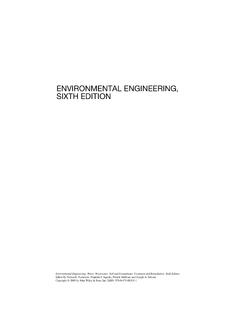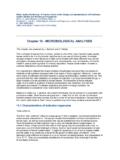Transcription of Form Approved OMB No. 0920-0666 www.cdc.gov/nhsn …
1 Form Approved OMB No. 0920-0666 Exp. Date:12/31/22 Long Term Care Facility Component Annual Facility Survey Page 1 of 6 *required for saving Tracking #: Facility ID: *Survey Year: *National Provider ID: State Provider #: Facility Characteristics *Ownership (check one): For profit Not for profit, including church Government (not VA) Veterans Affairs *Certification (check one): Dual Medicare/Medicaid Medicare only Medicaid only State only *Affiliation (check one): Independent, free-standing Independent, continuing care retirement community Multi-facility organization (chain) Hospital system, attached Hospital system, free-standing In the previous calendar year: *Average daily census: _____ *Total number of short-stay residents: _____ Average length of stay for short-stay residents.
2 _____ *Total number of long-stay residents: _____ Average length of stay for long-stay residents: _____ *Total number of new admissions: _____ *Number of Beds: _____ *Number of Pediatric Beds (age <21): _____ *Indicate which of the following primary service types are provided by your facility. On the day of this survey, indicate the number of residents receiving those services (list only one service type per resident, total should sum to resident census on day of survey completion): Primary Service Type Service provided? Number of residents a. Long-term general nursing: _____ b. Long-term dementia: _____ c. Skilled nursing/Short-term (subacute) rehabilitation: _____ d. Long-term psychiatric (non dementia): _____ e. Ventilator: _____ f. Bariatric: _____ g.
3 Hospice/Palliative: _____ h. Other: _____ Assurance of Confidentiality: The voluntarily provided information obtained in this surveillance system that would permit identification of any individual or institution is collected with a guarantee that it will be held in strict confidence, will be used only for the purposes stated, and will not otherwise be disclosed or released without the consent of the individual, or the institution in accordance with Sections 304, 306 and 308(d) of the Public Health Service Act (42 USC 242b, 242k, and 242m(d)). Public reporting burden of this collection of information is estimated to average 2 hours per response, including the time for reviewing instructions, searching existing data sources, gathering and maintaining the data needed, and completing and reviewing the collection of information.
4 An agency may not conduct or sponsor, and a person is not required to respond to a collection of information unless it displays a currently valid OMB control number. Send comments regarding this burden estimate or any other aspect of this collection of information, including suggestions for reducing this burden to CDC, Reports Clearance Officer, 1600 Clifton Rd., MS D-74, Atlanta, GA 30333, ATTN: PRA ( 0920-0666 ). CDC (Front) Rev 6 Continued >> Form Approved OMB No. 0920-0666 Exp. Date:12/31/22 CDC (Back) Rev 6 Long Term Care Facility Component Annual Facility Survey Page 2 of 6 Facility Microbiology Laboratory Practices *1.
5 Does your facility have its own laboratory that performs microbiology/antimicrobial susceptibility testing? Yes No If No, where is your facility s antimicrobial susceptibility testing performed? (check one) Affiliated medical center, within same health system Medical center, contracted locally Commercial referral laboratory *2. Indicate whether your facility screens new admissions for any of the following multidrug-resistant organisms (MDROs): (check all that apply) We do not screen new admissions for MDROs Methicillin-resistant Staphylococcus aureus (MRSA) If checked, indicate the specimen types sent for screening: (check all that apply) Nasal swabs Wound swabs Sputum Other skin site Vancomycin-resistant Enterococcus (VRE) If checked, indicate the specimen types sent for screening: (check all that apply) Rectal swabs Wound swabs Urine Multidrug-resistant gram-negative rods (includes carbapenemase resistant Enterobacteriaceae; multidrug- resistant Acinetobacter, etc.)
6 If checked, indicate the specimen types sent for screening: (check all that apply) Rectal swabs Wound swabs Sputum Urine *3. What is the primary testing method for C. difficile used most often by your facility s laboratory or the outside laboratory where your facility s testing is performed? (check one) Enzyme immunoassay (EIA) for toxin GDH plus NAAT (2-step algorithm) Cell cytotoxicity neutralization assay GDH plus EIA for toxin, followed by NAAT for discrepant results Nucleic acid amplification test (NAAT) ( , PCR, LAMP) Culture (C. difficile culture followed by detection of toxins) NAAT plus EIA, if NAAT positive (2-step algorithm) Other (specify): _____ Glutamate dehydrogenase (GDH) antigen plus EIA for toxin (2-step algorithm) ( Other should not be used to name specific laboratories, reference laboratories, or the brand names of C.)
7 Difficile tests; most methods can be categorized accurately by selecting from the options provided. Please ask your laboratory, refer to the Tables of Instructions for this form, or conduct a search for further guidance on selecting the correct option to report.) *4. Does your laboratory provide a report summarizing the percent of antibiotic resistance seen in common organisms identified in cultures sent from your facility (often called an antibiogram)? Yes No If Yes, how often is this summary report or antibiogram provided to your facility? (check one) Once a year Every 2 years Other (specify): _____ Continued >> Form Approved OMB No. 0920-0666 Exp. Date:12/31/22 CDC (Back) Rev 6 Long Term Care Facility Component Annual Facility Survey Page 3 of 6 Infection Prevention and Control Practices *5.
8 Total staff hours per week dedicated to infection prevention and control activity in facility: _____ a. Total hours per week performing surveillance: _____ b. Total hours per week for infection prevention and control activities other than surveillance: _____ *6. Is it a policy in your facility that use of gowns/gloves are required for care of residents infected or colonized with MRSA? (check one) Yes, all infected and colonized residents Yes, only residents with active infection Yes, only those with certain characteristics that make them high-risk for transmission ( , wounds, diarrhea, presence of an indwelling device) No *7. Is it a policy in your facility that use of gowns/gloves are required for care of residents infected or colonized with VRE? (check one) Yes, all infected and colonized residents Yes, only residents with active infection Yes, only those with certain characteristics that make them high-risk for transmission ( , wounds, diarrhea, presence of an indwelling device) No *8.
9 Is it a policy in your facility that use of gowns/gloves are required for care of residents infected or colonized with CRE? (check one) Yes, all infected and colonized residents Yes, only all residents with active infection Yes, only those with certain characteristics that make them high-risk for transmission ( , wounds, diarrhea, presence of an indwelling device) No *9. Is it a policy in your facility that use of gowns/gloves are required for care of residents infected or colonized with ESBL-producing or extended spectrum cephalosporin resistant Enterobacteriaceae? (check one) Yes, all infected and colonized residents Yes, only residents with active infection Yes, only those with certain characteristics that make them high-risk for transmission ( , wounds, diarrhea, presence of an indwelling device) No *10.
10 When a resident colonized or infected with an MDRO is transferred to another facility, does your facility communicate the resident s MDRO status to the receiving facility at the time of transfer? Yes No Continued >> Form Approved OMB No. 0920-0666 Exp. Date:12/31/22 CDC (Back) Rev 6 Long Term Care Facility Component Annual Facility Survey Page 4 of 6 Infection Prevention and Control Practices (continued) *11. Among residents with an MDRO admitted to your facility from other healthcare facilities, what percentage of the time does your facility receive information from the transferring facility about the resident s MDRO status? _____% Antibiotic Stewardship Practices *12. Are there one or more individuals responsible for the impact of activities to improve use of antibiotics at your facility?
















